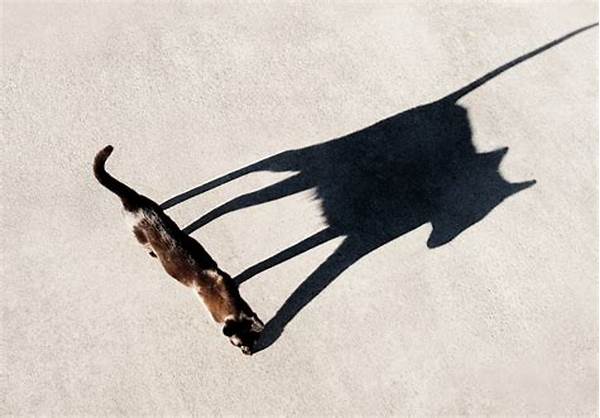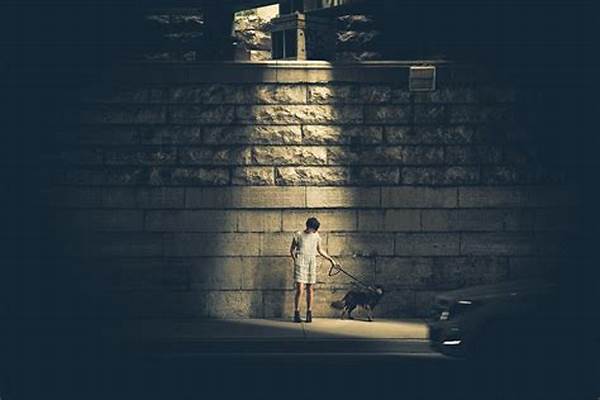Hey there, fellow photography enthusiasts! If you’ve ever tried photographing animals, you know that getting that perfect shot requires more than just a steady hand and a cute subject. Lighting can make or break your photos, transforming them from just okay to absolutely stunning. In this article, we’ll dive into some effective lighting techniques for animal photos. Whether you’re capturing your pet at home or wildlife in the great outdoors, having the right lighting can highlight those adorable details and bring your photos to life.
Read Now : Top Software For Linkedin Image Design
Understanding Natural Light
Natural light is your best friend, especially when photographing animals. It provides a soft and consistent glow that artificial lighting often struggles to mimic. The golden hours – those precious moments just after sunrise and before sunset – are particularly magical. During this time, the light is softer, casting fewer harsh shadows and offering a warm tone that enhances the natural beauty of animals. When using natural light, positioning is key. Try to keep the light source to the side of your subject to add depth and dimension. Don’t forget about overcast days either; they provide diffused, even light that’s perfect for taking detailed shots without strong contrasts.
Using reflectors with natural light can also enhance your photos. A simple white sheet or a professional reflector can bounce light back onto your subject, illuminating those shadowy areas. This is especially helpful when you’re working with animals who prefer to stay in darker spots, like under a tree or on a shaded porch. Play around with different angles and distances to see how the light changes and which setup works best for your furry friend! Mastering natural light is one of the fundamental lighting techniques for animal photos, providing you with authentic and beautiful images.
Using Artificial Light Creatively
Artificial light opens up a world of creative possibilities for animal photography. Sure, natural light is amazing, but sometimes Mother Nature doesn’t cooperate. That’s when you can turn to flashes and studio lights. Positioning your artificial light source thoughtfully can produce dramatic effects. You can experiment with colored gels to add mood or use a softbox to soften shadows. By mastering these lighting techniques for animal photos, you can shoot any time, regardless of the weather outside!
Don’t forget to consider the animal’s comfort. Bright flashes may startle them, leading to less-than-ideal expressions or disrupted behavior. Slow and steady wins the race here. Guide the light slowly and keep it at a distance to ensure your subject feels safe while still capturing those enchanting details.
Exploring Advanced Techniques
Once you’ve nailed the basics, you might want to experiment with more advanced lighting techniques for animal photos. Techniques like using off-camera flash create stunning highlights and artistic shadows. Off-camera flash allows you to control the direction and intensity of light, offering dramatically varied results. Want to make an animal’s fur look vivid and three-dimensional? Low, angled lights can help achieve this effect beautifully.
If you’re shooting through glass at a zoo or aquarium, polarizing filters can be lifesavers. These filters reduce glare and reflections, allowing you to shoot clear images even through glass enclosures. It’s an exciting step up but requires patience as you adapt to different settings and learn how light interacts with your subjects.
Fun Techniques to Try
1. Backlighting – Give your animals a glowing halo effect by positioning the light source behind them.
2. Silhouette Shots – Place your subject against a bright background to capture their unique shape.
3. Catchlights – Get that sparkle in the eye by reflecting light directly into your animal’s pupils.
4. Side Lighting – Adds depth by emphasizing textures on fur or feathers.
Read Now : “moody Aesthetic Editing Guide”
5. Diffused Flash – Soften the light for a natural look without harsh shadows.
Why Lighting Matters
Explore why lighting matters so much in capturing compelling animal photos. Without the right lighting techniques for animal photos, images can come out flat or unflattering. Lighting has the power to emphasize an animal’s natural beauty and convey the emotion or mood of a moment. With shadows controlled and highlights carefully placed, you can deliver images that capture not just what an animal looks like, but its spirit or character too.
Adjusting your camera settings alone isn’t enough when it comes to wildlife photography. Consider the impact lighting has on colors, textures, and expressions. The goal is to work with light, not against it. Photographers need to cultivate an eye for how light falls and bounces, learning to see scenes differently based on varying light sources.
Lighting Tools You Might Need
So, you’ve been reading about all these cool lighting techniques for animal photos and wondering what gear to get? Here’s a quick rundown: Reflectors for bouncing natural light are a must-have. Softboxes and diffusers can help control and soften artificial lights. A sturdy tripod ensures stability, while remote triggers allow for off-camera flash work.
Experienced photographers might also want a set of studio lights for controlled indoor environments. And don’t ignore your trusty smartphone – there are plenty of apps that can help with lighting scenarios or even act as light sources themselves. All these tools complement your primary gear and elevate your skills in capturing those picture-perfect moments.
Summarizing the Highlights
Lighting techniques for animal photos are an essential skill for any photographer interested in capturing the essence of nature’s creatures. Whether you’re a beginner using a smartphone or a seasoned pro carrying a DSLR with a bag of lenses, understanding and mastering lighting can fundamentally change your output. The right lighting draws a viewer in, tells a story, and highlights those beautiful, spontaneous moments that make animal photography so rewarding.
Bright and cheerful or moody and mysterious, lighting can transport a picture beyond mere documentation. It brings emotion and narrative to your photos. So next time you step out to capture that perfect pet pose or wildlife moment, remember these handy techniques and let your newfound lighting mastery shine!



